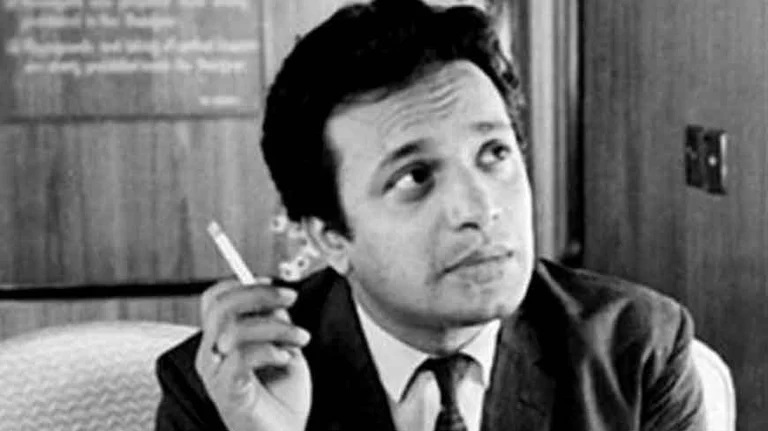Girish Ghosh: The Father of Bengali Theater

Girish Ghosh: The Father of Bengali Theater
Introduction
Girish Chandra Ghosh, often referred to as the Father of Bengali Theater, was a trailblazer whose innovative contributions revolutionized the performing arts in India. Born on February 28, 1844, in Kolkata, Ghosh was not just a playwright but also an actor, director, and mentor who left an indelible mark on Bengali theater. His legacy continues to inspire dramatists and artists worldwide, making him an integral figure in the cultural history of Bengal.
Early Life of Girish Ghosh
Ghosh was born into a middle-class Bengali family. From an early age, he displayed a keen interest in literature and the arts. Educated at the Hare School and later at the Metropolitan College in Kolkata, Ghosh was heavily influenced by Western literature and drama, which shaped his unique approach to storytelling. He combined this Western influence with traditional Indian themes, creating a distinctive style that resonated with audiences.
Contributions to Bengali Theater
Founding of Star Theatre
One of Ghosh’s most notable achievements was the establishment of the Star Theatre in 1883. The theater became a hub for cultural and social reform, attracting intellectuals and commoners alike. Through the Star Theatre, Ghosh elevated the standard of Bengali drama by introducing well-researched scripts, professional acting, and innovative stagecraft.
Revolutionary Plays
Ghosh wrote and directed several iconic plays, blending mythological, historical, and social themes. Some of his most celebrated works include:
- Bilwamangal – A tale of love and devotion.
- Daksha Yajna – A mythological drama showcasing themes of sacrifice.
- Chaitanya Leela – A spiritual play about Chaitanya Mahaprabhu.
- Prahlad Charitra – A story of faith and resilience.
These plays not only entertained but also educated audiences, addressing pressing social issues and inspiring change.
Naturalistic Acting
At a time when Indian theater was dominated by exaggerated performances, Ghosh introduced naturalistic acting. He encouraged actors to focus on subtle expressions and emotional authenticity, setting a new standard for dramatic performances.
Girish Ghosh and Ramakrishna Paramahamsa
A pivotal aspect of Ghosh’s life was his close association with Ramakrishna Paramahamsa, a revered saint. Despite leading a life of artistic indulgence, Ghosh was deeply influenced by Ramakrishna’s teachings. This spiritual connection brought a profound depth to his works, blending themes of morality, faith, and human struggle. Ghosh often referred to Ramakrishna as his spiritual guide, and their relationship significantly impacted his later plays.
Themes in Girish Ghosh’s Works
Mythology and Religion
Many of Ghosh’s plays were rooted in Hindu mythology, reinterpreted to reflect contemporary social concerns. For instance, Daksha Yajna explored the dynamics of devotion and duty, while Chaitanya Leela celebrated spiritual enlightenment.
Social Reforms
Ghosh was a social reformer at heart. Through his plays, he addressed critical issues like caste discrimination, women’s rights, and colonial oppression. His works served as a mirror to society, encouraging introspection and change.
Spirituality
The influence of Ramakrishna Paramahamsa introduced a spiritual layer to Ghosh’s storytelling. His later works often delved into questions of faith, redemption, and the meaning of life.
Legacy and Influence
Mentorship
Girish Ghosh was a mentor to many aspiring artists and writers. His guidance helped shape the careers of luminaries like Sarat Chandra Chattopadhyay and Keshab Chandra Sen, ensuring the growth of Bengali literature and drama.
Cultural Renaissance
Ghosh was a prominent figure during the Bengali Renaissance, a period of intellectual and cultural awakening in 19th-century Bengal. His works contributed significantly to this movement, making theater a respected art form.
Influence on Indian Cinema
Ghosh’s innovative storytelling techniques and character development inspired early Indian filmmakers. His influence can be seen in the works of iconic directors like Satyajit Ray, who admired Ghosh’s ability to portray human emotions authentically.

Challenges Faced by Girish Ghosh
Despite his success, Ghosh’s journey was fraught with challenges. He faced criticism from conservative circles for modernizing theater and addressing taboo subjects. Financial difficulties and personal tragedies also marked his life. Yet, his unwavering commitment to the arts allowed him to overcome these obstacles and leave a lasting legacy.
Famous Works of Girish Ghosh
Bilwamangal
This play tells the story of Bilwamangal, a poet who transforms his life from a path of indulgence to one of devotion. It remains one of Ghosh’s most celebrated works for its emotional depth and spiritual themes.
Chaitanya Leela
A biographical drama about Chaitanya Mahaprabhu, this play captures the saint’s journey of faith and his teachings on love and humanity.
Daksha Yajna
Based on Hindu mythology, this play explores themes of sacrifice, pride, and devotion, showcasing Ghosh’s ability to make ancient stories relevant to contemporary audiences.
Girish Ghosh’s Vision for Theater
Girish Ghosh believed that theater should be more than just entertainment—it should educate, inspire, and provoke thought. He envisioned a performing arts scene where traditional narratives could coexist with modern sensibilities, making theater a powerful tool for cultural and social reform.
Why Girish Ghosh Matters Today
Even in the 21st century, Ghosh’s works remain relevant. His emphasis on realism, his exploration of societal issues, and his spiritual insights continue to resonate with modern audiences. Ghosh’s ability to adapt timeless stories to address contemporary challenges serves as an inspiration for today’s playwrights and artists.
External Resources and Internal Links
External Links:
Conclusion
Girish Ghosh was more than just a dramatist; he was a visionary who used the medium of theater to enlighten and empower. As the Father of Bengali Theater, his legacy continues to inspire artists, actors, and audiences, proving that great art transcends time. By blending tradition with innovation, Ghosh transformed Bengali drama into a vibrant and dynamic art form that remains relevant today.
Discover more about Bengal’s cultural legends on our blog, Legends of Bengal. Celebrate the enduring legacy of Ghosh by sharing this article with fellow enthusiasts of Indian theater.
Follow Us for on Social Media: Facebook | Instagram | Pinterest | Twitter | YouTube







